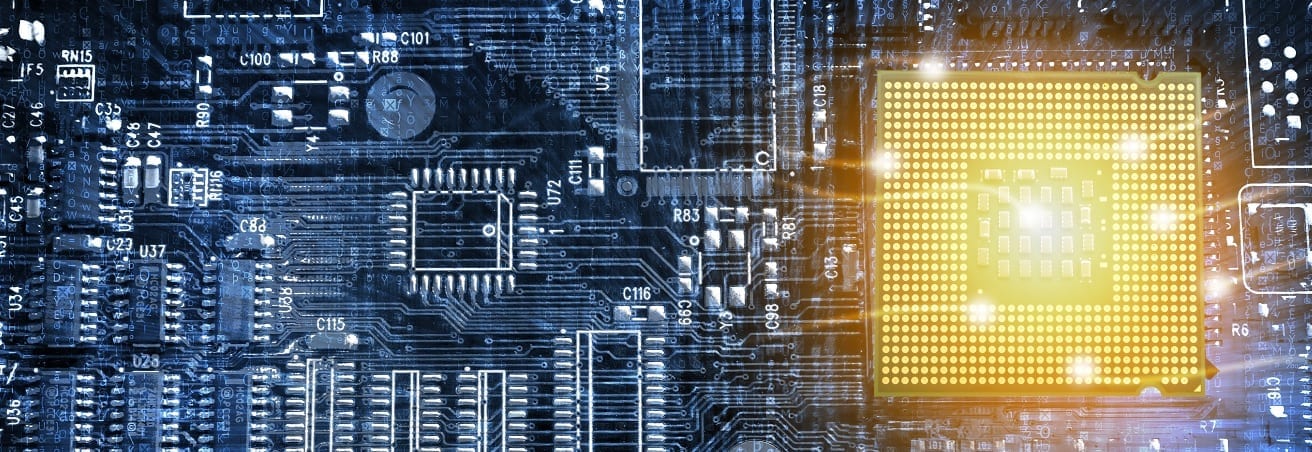
Use of GPU is fast expanding outside of the 3D video game realm and offering numerous benefits for enterprise as well as industrial applications. With Deep learning taking a center stage in the industrial 4.0 revolution, GPU and x86 CPU manufacturers are ensuring that solution developers are not restrained by the range of options when it comes to choosing the right silicon for their product.
So let’s review what GPU can do differently from a CPU and vice versa, also how they make the perfect couple in the world of robot surgeons, crypto-currencies, smart factories and self-driving cars.
Let’s review one by one and discuss their basic differentiating characteristics.
CPU – The multi-tasking ‘Do-it-all’ guy.
The central processing unit (CPU) of a computer is often referred to as its brain where all the processing and multitasking takes place. It is the most primary part of the hardware platform that defines the computing power available in your PC.
CPUs are general purpose processors. They are built for running different types of applications and perform random tasks simultaneously and quickly. They can play your video, display information on a browser, make a skype call, receive a large attachment through email, all at the same time. Modern multi-core x86 CPU’s are the most popular choice for most use cases including HD video or real time HD image processing where 3D rendering is not required.
Modern general purpose x86 computing processors are coming with graphic processing functionalities integrated into the CPU to power seem-less video applications including AI driven video recognition applications such as facial recognition, licence plate reading, intrusion detection, large animal detection, vehicle classification, customer demographic recognition and the list goes on.
GPU – The ‘Whatever-you-are, I-will-learn-you-and-I-will-process-you-100x-faster, over-and-over-again’ gal.
Graphics processing units (GPUs) are specialized microprocessors that were originally used primarily to render the 3D graphics of games but are now being considered for a wider range of applications.
GPUs are designed to perform specific computational tasks such as simple mathematical operations repeatedly, known as parallel computing. For example, when processing the graphic data, GPU is able employ its parallel computing algorithm to see a large task in small chunks of identical tasks which it can perform all at once. It may take GPU to do the first multiplication of the floating points a bit longer than the CPU but it will take it much lesser to calculate it a million times. This allows GPUs to speed up building of 3D images for graphical displays in real time.
Since the emergence of deep learning technologies, GPUs have become even more significant in the next generation network infrastructure. Research has shown that, when training deep learning neural networks, GPUs can be up to 250x faster than standard CPUs. General Purpose GPUs are complementing CPUs by offering parallel computing capabilities in enterprise network computing, bit coin data mining is one such example.
The Core Difference
Both CPUs and GPUs contain cores, however, the number of which they contain varies greatly. A typical CPU will feature multiple processing cores with lots of cache memory that will enable multiple tasks to be performed simultaneously, however, GPUs offers hundreds of cores that can process multiple threads of data at once, hence both can be assigned with a different computing function within the same system.
Need for Speed
The key difference in speed between graphics processing units and central processing units is dependent on the function they are intended to perform. While CPUs can access memory in the RAM very quickly, they are unable to transport large amounts of data at once. GPUs, on the other hand, have a much higher latency in computing the first of parallel tasks, but using its dozens of cores and internal GPU clock there are no memory bottlenecks to be faced when processing 1000’s of parallel computing tasks instantly. Very useful for 3D Deep as well as large scale fixed function block computing.
Say Hello to Accelerated Computing
The concept of accelerated computing focuses on the use of GPUs and CPUs together to enhance applications using deep learning.
The way GPU-accelerated computing works is by offloading some of the more computationally-heavy fixed function portions of an application to the GPU, while the remainder of the application codes continue to run within the CPU.
Not all Image processing AI application require a GPU, as latest generation high end quad core x86 CPUs offer robust edge computing platforms to process real time graphic data on premise, send filtered data and analysis to the cloud, and receive operational commands very efficiently. However, evolution of mixed network infrastructures comprising of GPU, General Purpose General Processing Units (GPGPUs) and CPUs is a leap towards high-performance computing.
Accelerated computing is most commonly found within high-performance computing operations and is predicted to revolutionize both current and future technologies including drones, robotics, artificial intelligence and autonomous vehicles.
With increasing adoption and deployment of cutting edge technologies, demand for more processing power is constantly increasing. While x86 CPUs are the building blocks of the software-defined everything, GPUs are catapulting dream technologies into the realm of industrialization. Both hand in hand building a future of accelerated computing, creating new possibilities.






